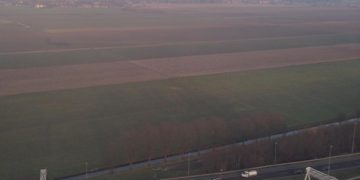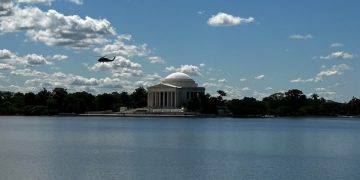Congress Approves Infrastructure Bill: Impact on US Economy
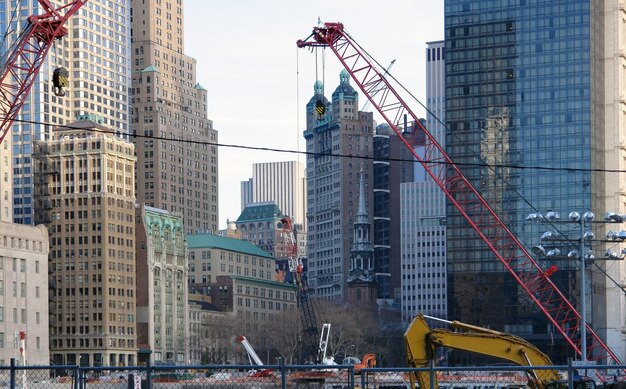
The recent congressional approval of the new infrastructure bill is poised to significantly impact the US economy, promising investments in crucial sectors like transportation, energy, and broadband, while also aiming to boost job creation and long-term growth.
The United States Congress has recently passed a landmark infrastructure bill, setting the stage for significant changes in the nation’s economy. Breaking: Congress Approves New Infrastructure Bill – How Will It Impact the US Economy? This legislation promises to modernize America’s aging infrastructure, touching everything from roads and bridges to broadband internet access and renewable energy. The potential effects of this bill are far-reaching, and understanding its key provisions is crucial for businesses, investors, and the public alike.
What’s Included in the Infrastructure Bill?
The infrastructure bill encompasses a wide variety of projects and initiatives. It’s not just about fixing potholes; it’s a comprehensive plan to upgrade and expand the nation’s infrastructure for the 21st century.
Transportation Infrastructure
A significant portion of the bill is dedicated to revitalizing the nation’s transportation networks. This includes funding for roads, bridges, public transit, and airports.
- Road and Bridge Repair: Billions of dollars are allocated for repairing and rebuilding roads and bridges across the country.
- Public Transit Modernization: Investments will be made to modernize public transit systems, including buses, trains, and subways.
- Airport Improvements: Funds will be used to improve airport infrastructure, such as runways, terminals, and air traffic control systems.
These transportation investments aim to reduce traffic congestion, improve safety, and facilitate the movement of goods and people.
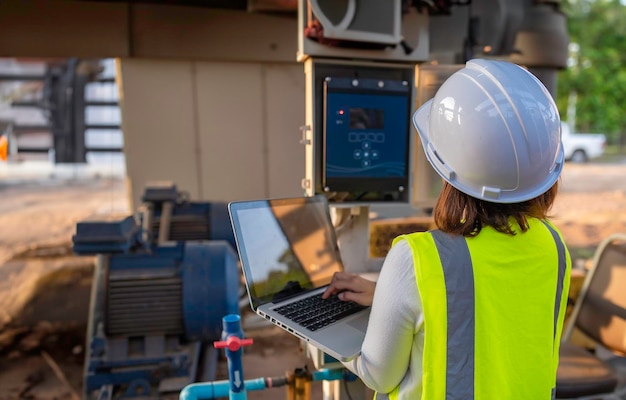
Energy and Utilities
The bill also addresses the need to modernize the nation’s energy infrastructure and expand access to clean water.
- Renewable Energy Investments: Significant funding is directed towards renewable energy projects, such as solar, wind, and hydropower.
- Electric Grid Upgrades: Investments will be made to upgrade the electric grid to improve reliability and resilience.
- Water Infrastructure Improvements: Funds will be used to replace lead pipes, improve water treatment facilities, and expand access to clean water.
These investments aim to reduce carbon emissions, ensure a reliable energy supply, and protect public health.
In summary, the infrastructure bill is designed to address critical needs in transportation, energy, and utilities. By investing in these areas, the bill seeks to improve the quality of life for all Americans and promote economic growth.
How the Infrastructure Bill Will Impact Job Creation
One of the primary goals of the infrastructure bill is to create jobs. The large-scale investments in infrastructure projects are expected to generate significant employment opportunities across various sectors.
Direct Job Creation
The construction and engineering industries will see a direct boost in employment. As projects get underway, there will be a need for skilled workers to build and maintain the new infrastructure.
The bill’s focus on repairing and upgrading existing infrastructure, as well as building new projects, means that there will be demand for construction workers, engineers, architects, and project managers.
Indirect Job Creation
The infrastructure bill is also expected to create jobs indirectly by supporting businesses and industries that rely on infrastructure.
For example, improved transportation networks can make it easier for businesses to move goods and services, leading to increased economic activity and job creation. Similarly, expanding access to broadband internet can support the growth of online businesses and create opportunities for remote work.
Long-Term Economic Growth
The infrastructure bill is intended to promote long-term economic growth by laying the foundation for a more productive and competitive economy.
Modernizing infrastructure can improve efficiency, reduce costs, and increase productivity across various sectors. For example, improved transportation networks can reduce shipping times and costs, making businesses more competitive. Similarly, expanding access to broadband internet can enable businesses to adopt new technologies and reach new markets.
Overall, the infrastructure bill has the potential to create jobs and boost economic growth in both the short term and the long term.
The Impact on Different Sectors of the Economy
The passage of the infrastructure bill is likely to have a ripple effect across various sectors of the economy. Some sectors will benefit more directly than others, while others may experience indirect effects.
Construction and Engineering
As previously mentioned, the construction and engineering sectors are expected to be among the biggest beneficiaries of the infrastructure bill.
The bill includes funding for a wide range of construction projects, including roads, bridges, public transit, airports, and water infrastructure. This is expected to create significant demand for construction materials, equipment, and services.
Furthermore, the bill’s focus on modernizing infrastructure means that there will be a need for advanced engineering expertise to design and implement these projects. This is expected to benefit engineering firms and professionals who specialize in infrastructure design and construction.
Technology and Telecommunications
The bill’s focus on expanding access to broadband internet is expected to benefit the technology and telecommunications sectors.
The bill includes funding for building out broadband infrastructure in underserved areas, as well as providing subsidies to help low-income households afford internet service. This is expected to increase demand for internet services and devices, benefiting telecommunications companies, internet service providers, and technology manufacturers.
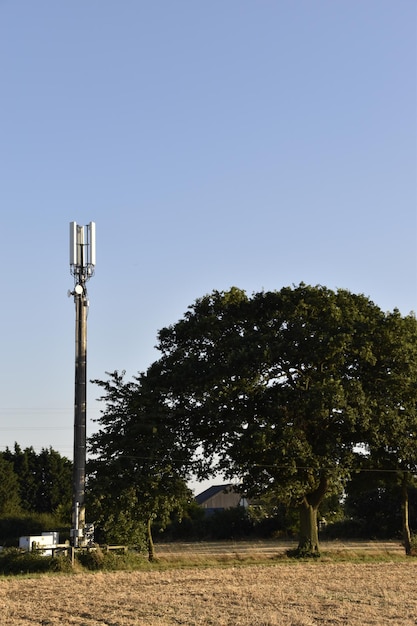
Manufacturing and Materials
The infrastructure bill is also expected to benefit the manufacturing and materials sectors. The construction projects funded by the bill will require a wide range of materials, including steel, concrete, asphalt, and other building materials.
This is expected to increase demand for these materials, benefiting manufacturers and suppliers. Furthermore, the bill’s focus on using American-made materials and products is expected to provide a boost to domestic manufacturing.
In conclusion, the infrastructure bill is expected to have a broad impact on various sectors of the economy, with the construction, technology, manufacturing, and materials sectors poised to benefit the most. However, the indirect effects of the bill are likely to be felt across a wider range of industries.
Potential Challenges and Obstacles
While the infrastructure bill holds great promise, there are also potential challenges and obstacles that could hinder its implementation and impact.
Supply Chain Disruptions
One of the biggest challenges facing the infrastructure bill is the potential for supply chain disruptions. The construction industry is already facing shortages of materials, equipment, and labor, and these shortages could worsen as projects get underway.
This could lead to delays, cost overruns, and project cancellations. To mitigate these risks, policymakers and industry leaders need to work together to address supply chain issues and ensure that projects have access to the resources they need.
Inflation
Another potential challenge is inflation. The large-scale investments in infrastructure projects could increase demand for goods and services, leading to higher prices.
This could erode the purchasing power of consumers and businesses, and could also make it more difficult to implement the infrastructure bill effectively. To manage inflation risks, policymakers need to carefully monitor the economy and take steps to control inflation if it becomes a problem.
Regulatory Hurdles
Finally, the infrastructure bill could face regulatory hurdles. Many infrastructure projects require permits and approvals from various government agencies, and these processes can be lengthy and complex.
This could delay projects and increase costs. To streamline the regulatory process, policymakers need to work to reduce red tape and ensure that projects can move forward efficiently.
In summary, the infrastructure bill faces several potential challenges, including supply chain disruptions, inflation, and regulatory hurdles. Addressing these challenges will be critical to ensuring that the bill achieves its goals.
The Long-Term Vision for Infrastructure in the US
The infrastructure bill represents a significant step towards modernizing America’s infrastructure, but it is just one piece of a larger vision for the future. To create a truly world-class infrastructure system, the US needs to continue investing in infrastructure and adopt innovative approaches to planning, design, and construction.
Sustainable Infrastructure
One key aspect of the long-term vision for infrastructure is sustainability. This means building infrastructure that is environmentally friendly, resilient to climate change, and equitable for all communities.
- Using green building materials and practices
- Designing infrastructure to withstand extreme weather events
- Ensuring that all communities have access to high-quality infrastructure
Smart Infrastructure
Another key aspect of the long-term vision is smart infrastructure. This means using technology to improve the efficiency, safety, and reliability of infrastructure systems.
- Implementing smart traffic management systems
- Using sensors and data analytics to monitor infrastructure conditions
- Developing intelligent transportation systems
These innovations can help reduce congestion, save energy, and improve safety.
Public-Private Partnerships
Finally, the long-term vision for infrastructure includes the use of public-private partnerships (PPPs) to finance and develop infrastructure projects.
PPPs can bring private sector expertise and capital to infrastructure projects, and can help to accelerate project delivery and reduce costs. However, it is important to ensure that PPPs are structured in a way that protects the public interest and provides value for money.
In conclusion, the long-term vision for infrastructure in the US is one of sustainable, smart, and innovative infrastructure systems that meet the needs of all communities and support a strong economy.
Conclusion
The infrastructure bill recently approved by Congress represents a pivotal moment for the United States, poised to reshape the nation’s economic landscape through significant investments. By modernizing aging infrastructure, fostering job creation, and stimulating growth across various sectors, the bill aims to lay the groundwork for a more resilient and competitive economy. While challenges such as supply chain disruptions and regulatory hurdles may arise, a long-term commitment to sustainable and smart infrastructure practices can help ensure that the bill’s benefits are fully realized. This transformative legislation promises to improve the quality of life for all Americans and pave the way for a brighter economic future.
| Key Point | Brief Description |
|---|---|
| 🛠️ Infrastructure Modernization | Upgrading roads, bridges, and public transit systems. |
| 💡 Renewable Energy Boost | Significant investments in solar, wind, and hydropower projects. |
| 🌐 Broadband Expansion | Extending internet access to underserved areas. |
| 👷 Job Creation | Generating employment opportunities across various sectors. |
Breaking: Congress Approves New Infrastructure Bill – How Will It Impact the US Economy?
▼
The bill focuses on transportation, energy, broadband internet, and water infrastructure improvements. These include repairs and upgrades to roads, bridges, renewable energy projects, and expanding internet access.
▼
The bill creates jobs directly in construction and engineering and indirectly by supporting industries reliant on improved infrastructure. Better transportation and expanded broadband access foster business growth.
▼
The construction, engineering, technology, telecommunications, manufacturing, and materials sectors are expected to benefit significantly. There will be increased demand for construction materials and technology services.
▼
Supply chain disruptions, inflation, and regulatory hurdles could hinder the bill’s implementation. Shortages of materials and labor, rising prices, and complex permitting processes could cause delays.
▼
The long-term vision includes sustainable, smart, and innovative infrastructure systems. This means environmentally friendly projects, using technology to improve efficiency, and public-private partnerships for financing and development.
Conclusion
In conclusion, the infrastructure bill’s approval marks a transformative step forward for the US economy, with significant investments set to modernize vital systems and foster broad economic growth. While challenges are anticipated, strategic planning and continued commitment to innovation will be crucial in realizing the bill’s full potential, ultimately enhancing the nation’s infrastructure and quality of life for all.
